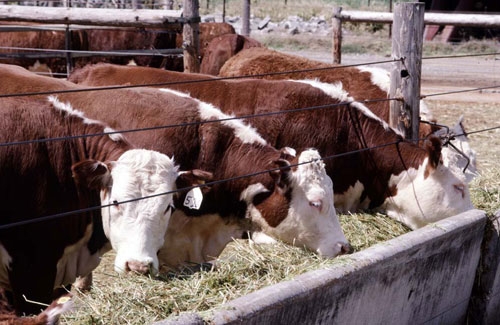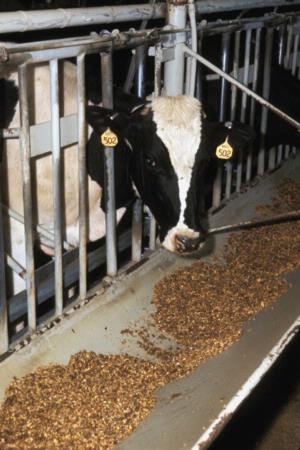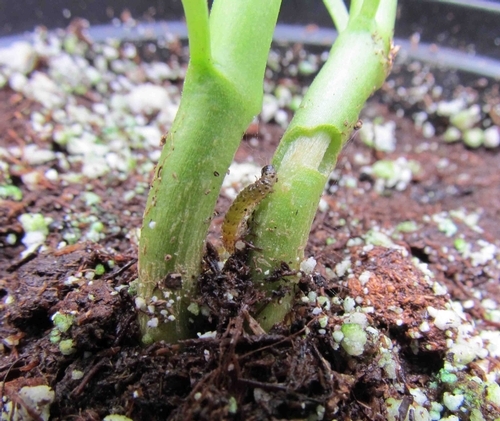Posts Tagged: cattle
Fontarronco-A Garden in Tuscany
The gardens at Fontarronco, near Arezzo, are typically Italian. Among the 1200 acres, there are peach orchards, olive groves and vineyards. The property and villa have been there since the 18th century and owned by the Illuminati family. Princess Ruffo designed the gardens around the villa. Being English with English tastes and knowledge of English gardens, her garden in Tuscany remains delightfully Italian.
The Mediterranean weather in Italy is similar to weather in Northern California. The summers are hot and the need for adequate garden irrigation is critical. The Princess’s aim was to grow vegetables for the table, flowers to decorate the villa, and to devise shaded sitting areas and walkways where her guests could rest and escape the heat.
Princess Ruffo was a well-known agriculturist, who had been awarded the ‘Medaglio d’ Oro’ by the Italian government for her successful farming methods. On the farm she raised a rare kind of cattle, called Razza chianina, a breed which was known to the Romans 2,000 years ago. Their white hides are like satin upholstery and their black eyes have long sweeping eyelashes. They help with the villa gardens by producing the richest fertilizer which in turn supports the thin, poor soil found in Tuscany.
In summer, the gardens at Fontarronco are full of brilliant color. Dahlias, chrysanthemums, lavenders, rosemary and zinnias show every dimension of color along with roses that fill the air with heavy fragrance. Arbors provide shade for the sitting areas and walkways. It was felt that any garden designer would be a success if they created a simple, effective garden site with colorful flowers, raised beds of vegetables, containers of citrus and a cool place to rest and enjoy the views. Not much different than how we plan and design our gardens in Solano County.

A view of the gardens. (photo by Sharon Rico)
Cooling cattle; European pepper moth examined
For an article "Should Wyoming livestock and ag adjust to climate?" in the Billings Gazette, reporter Paul Murray sought information about livestock animals' response to warmer temperatures from Frank Mitloehner, UC Cooperative Extension Specialist in the Department of Animal Science at UC Davis. Mitloehner talked about ways animals can cool down and discussed shade, fans, sprinklers and even alternative cattle breeds. "We're seeing more and more extreme weather. That is a tendency we're seeing more and more often. That can stress animals. Similar to animals in the wild, that can impact animals' reproductive ability and their performance," he told the reporter.
European pepper moth widespread in California
Surendra Dara for Western Farm Press
Western Farm Press published this article about European pepper moth by Surendra Dara, UC Cooperative Extension farm advisor in Santa Barbara County. Dara explains that the European pepper moth has been reported in several central and southern California counties. The pest prefers to feed at the plant base of crops such as corn, peppers, tomatoes, squash, strawberries and some ornamental plants. Dara has been appointed to the national Technical Working Group for European pepper moth, along with UC Cooperative Extension colleagues James Bethke and Steve Tjosvold.
Dara also wrote about this pest and shared photos of it on the UC Strawberries and Vegetables blog.
Curing pneumonia in cattle
Bovine respiratory disease - pneumonia in cattle - is the most significant health problem for the beef industry. The disease annually results in the death of more than 1 million animals. In addition to these losses, beef producers spend a significant sum on disease-related medication and labor costs each year.
According to AgInfo.net, raising cattle for specific resistance to BRD was a hot topic at the Beef Improvement Federation Conference earlier this month in Bozeman, Mont. Attendees learned about research under way at UC Davis to find the genetic component to BRD resistance and, eventually, breed out this deadly disease.
This spring, UC Davis announced that USDA awarded the university $2.6 million to carry out research aimed at reducing the incidence of bovine respiratory disease. The goal of the newly funded research project is to integrate research, education and extension activities to improve diagnostics and develop cost-effective genomic and management approaches that reduce the incidence of the BRD in beef and dairy cattle.
The extension component of the project is headed by Alison Van Eenennaam, Cooperative Extension specialist in animal genomics and biotechnology in the UC Davis Department of Animal Science. Van Eenennaam made a presentation at the Bozeman conference about the weight cattle producers should be give to BRD resistance when making selection decisions.

Twenty-nine percent of beef cattle deaths are associated with bovine respiratory disease.
Cattle ranching offers notable public benefits
The Sierra Nevada and Coastal Range foothills are replete with wide open spaces - a home for birds and other wildlife, majestic oaks and grazing cattle. The bucolic countryside vistas that come courtesy of California’s ranchers are among the many public benefits of rangeland grazing.
“The public doesn’t always realize what ranchers are doing and how that benefits everyone,” said Bill Tietje, UC Cooperative Extension natural resources specialist based in San Luis Obispo County. “No one really thinks about it, until it’s gone.”
Many rangeland benefits can be grouped as “ecosystem services.” According to scientists:
- Rangeland plays a role in the state’s water cycling. Eighty percent of California water flows through rangeland.
- The diversity of plants and animals is greater on grazed, managed grassland than on unmanaged grassland.
- Wild raptors overwinter on grasslands managed for beef cattle.
- Half the habitat for the tiger salamander is grazed stockponds, created by ranchers to provide water for their cattle. The stockpond’s edge of clipped grass and the absence of crowding shrubbery mimic the rare species’ natural habitat – vernal pools.
- Rangeland provides habitat for insects that are valuable for pollination.
- Cattle reduce the dry grass that could fuel wildfire.
- Grazing improves the habitat for the Bay checkerspot butterfly, a threatened California insect.
- Rangeland sequesters carbon in the soil.
There are threats to the long term viability of cattle ranches in California that put all these benefits at risk:
The sale of the ranch for development is very attractive for a rancher who isn’t making a sufficient profit on the land. Also, the division of a ranch for inheritance purposes can make it difficult to keep a ranch intact and in the business of raising cattle.
UC Berkeley professor of rangeland management and ecology Lynn Huntsinger said public misunderstanding of and a lack of appreciation for ranching is another way the system is threatened.
“Imposing regulations that aren’t needed and not valuing ranchers as stewards can have a demoralizing effect,” Huntsinger said.
Much of the land grazed by ranchers is public and grazing is supported by public and environmental agencies - the U.S. Forest Service, Bureau of Land Management, parks and preserves - because of the many benefits it provides.
Public Benefits of Grazing
Valley ozone story takes off
Research by UC Davis scientists that revealed a substantial amount of San Joaquin Valley ozone is generated by animal feed is getting wide coverage in the news media. Google News reported 126 articles on the subject.
Many newspapers ran the Associated Press version of the story, written by Fresno-based Tracie Cone. She reported that the study — funded by the U.S. Department of Agriculture, California Air Resources Board and the San Joaquin Valley Air Pollution Control District — was initially intended to measure the impact of animal manure, urine and flatulence on ozone levels.
However, the researchers discovered that millions of tons of fermenting cattle feed bears greater responsibility.
Mark Grossi of the Fresno Bee noted in his story that the study was published last month in the journal Environmental Science & Technology. This week's flurry of interest was generated by an April 21 news feed from the American Chemical Society press office. ACS publishes the journal.
In his story, Grossi wrote that the cattle feed explains only half of the Valley's ozone problem. The other half, Nitrogen oxide, or NOx, comes from vehicles. San Joaquin Valley Air Pollution Control District believes NOx is more important to control, the Bee article said.Meanwhile, Capital Press reported yesterday that the U.S. Environmental Protection Agency has rescinded its long-standing exemptions for agriculture under emission-control rules.
"Air quality in the San Joaquin Valley is consistently among the worst in the nation," said Deborah Jordan, director of the Air Division for the EPA's Pacific Southwest region, in a statement. "New and modified facilities will now be subject to the most stringent requirements, which will contribute to the health of our communities."

A dairy cow eats its rations.




